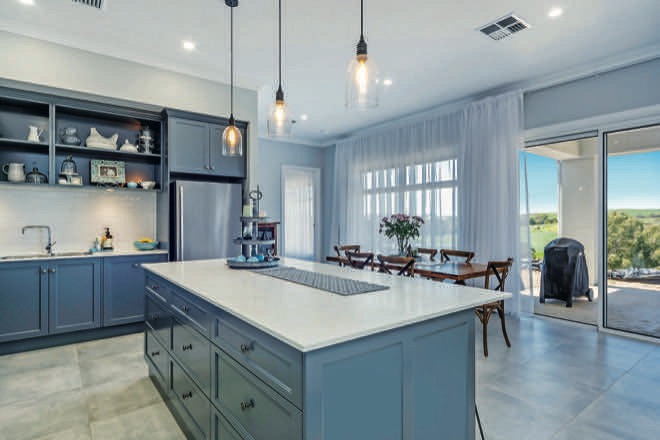Learn all about retrofitting – a technical term that is the essence of practical renovating
Resource consumption in the average home can be dramatically improved by retrofitting. Retrofitted homes incorporate the very best techniques and technologies of sustainable living, and by definition, retrofitting describes the measures taken to allow new or updated fixtures to be fitted to an existing building. It is in essence the essential green ingredient to renovating your home.
But when is it better to retrofit a home as opposed to demolishing and rebuilding it? The answer to that question is dependent on many factors, and most experts would agree there is no simple formula. What experts do agree upon is retrofitting where possible, as it results in lower water pollution, less solid waste generation and less carbon emissions.
It is considered that the retrofit option has a lower life cycle of energy, global-warming potential and air pollution, which are predominantly associated with the option of a new building. But the retrofit option also has lower economic costs than rebuilding.
If it is impossible to retrofit, and rebuilding is the only option, there are ways to overcome the trade-off in negative environmental impacts, such as use of renewable energy sources or employing the re-use and recycling of deconstruction and demolition materials in new construction.
Speaking exclusively with Renovate & Extend, Caroline Pidcock is the principal of Caroline Pidcock Architects, specialising in environmentally friendly design for both residential and commercial projects. Pidcock believes, “From a sustainability point of view, there needs to be a lot more attention paid to retrofitting existing buildings.
“Retrofitting is really valuable from a sustainable point of view. We need to do more with what buildings and structures have already got. But that is not to say that every building should be retrofitted. Unfortunately, some buildings are wrongly built — they are positioned incorrectly, they are in the wrong position, and so their merits are dubious. There may be great energy expelled in retrofitting a building that is essentially inefficient.
“But most would agree, the real test for architects is to optimise existing stock where they can. There’s no black-and-white criterion, it’s a case-by-case scenario whether or not that is possible and the best solution. You need to have in mind good passive solar design, how well the site is situated and how you can best optimise those opportunities.
“I’m a great believer in retrofitting where possible. If you can’t retrofit the existing building and you do re-build, then you can recycle the building materials. Europe is great in the way they incorporate the new with the old. They see the benefit of not wiping out the past and where they can, they incorporate the old and the new together. That is what we need to do more of — that way, we record our history in the built history.”
But what are the nuts and bolts of retrofitting? What are the hands-on practical aspects of putting your time, money and resources into an existing dwelling? A man that specialises in retrofitting existing homes is Bill Morris from Extend a Home. Morris has some real hands-on experience in the practicalities of retrofitting homes. “From my understanding, retrofitting is somewhat of a commercial term. I take it as refitting an old house to create a modern home. A typical example of what we do at Extend a Home is to add a first floor addition to an existing house, which is obviously building on what already exists. Other options we would proceed with in consultation with the owners, is to add new bedrooms or bathrooms, with the addition of a new wing to the house.
“Sometimes in the execution of retrofitting, we would knock down some walls and redo a part of the existing house,” says Morris. “It’s all about building around and enhancing a structure that is already built, and by definition, that’s retrofitting an existing structure.
“In practical terms, the most important element is planning and budgeting. It sounds simple, but they are the magic ingredients that make all the difference in completing a successful project. That way, you make the best use of materials that may already exist. Rather than knock down and rebuild, where it is possible it is always preferable to retrofit — that way, you can save money, time and materials.
“Today, if people have an older house, they are far more conscious of what the house used to be like, and more often than not they want to preserve the house to be like it used to be. It’s also far more possible to get similar or custom-made materials that are in keeping with the older styles of houses. For instance, the beautiful old panelled doors that were common in old terrace houses are now being produced. Now you can buy them, along with the old ceiling light switches, and people love them. In fact, there are a lot more old-style fixtures on the market than there were 10 or 15 years ago — they’re definitely appreciated by more and more renovators now. People are a lot more conscious and willing to keep the original style of old homes, and I think that’s great.
“I have a theory that people are increasingly valuing old homes. Many new homes, such as the basic display homes, are designed for larger-sized blocks that don’t exist for most of us. A lot of old homes that people have purchased have smaller blocks, and these new larger homes are not suitable for these smaller blocks. Most council authorities have set rules about how far from the boundaries the house can be positioned, therefore many new home designs don’t work. For many homeowners, it’s far better to upgrade an existing house. As well as preserving the existing structure and materials, retrofitting saves on the cost of demolishing and rebuilding. Then there’s also the other saving on costs that you don’t often realise if you do rebuild, such as moving and storage.”
HOME RETROFITTING TIPS
Here is a list of simple things you can do to retrofit your home with green practices that are better for your health, the environment and your wallet:
*Install double-glazed windows and solar hot-water heating. These can reduce household emissions and save you money.
*Install water-efficient appliances and systems, such as water-saving showerheads, dual-flush toilets and a rainwater collection system.
*Refurbish rooms using non-toxic materials, paints, fabrics and dyes.
*Refurbish your home to include energy-efficient appliances.
*Ensure you insulate your home, as it keeps the home cooler in summer and warmer in winter.
*Use recycled building materials during renovations as much as possible.
*Start an organic garden using composts and mulch, and plant native species in your garden.
*Install grey-water systems, including recycled water usage for your garden.



